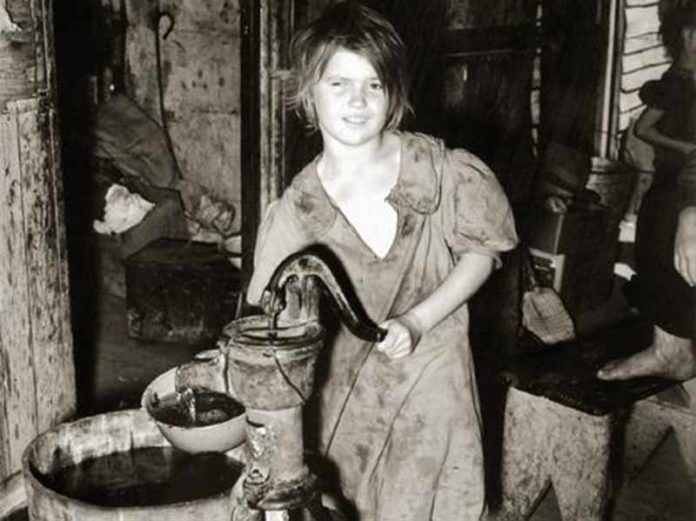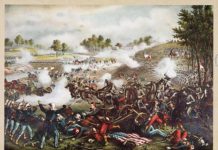High unemployment, rising prices, low private investment and consumer consumption levels, and a lowering of industrial output describe conditions in late 1937 and aptly characterize the possible on-set of a “double-dip” recession in 2011. In 1937, the President and Congress battled over balancing the federal budget and curtailing government spending reflected in “mounting deficits.” The size of the public debt increased to forty percent, almost triple what it was in 1929. Franklin Roosevelt finally broke with the balanced-budget legislators in 1938 and called for $2 billion in federal spending, something referred to as “stimulus spending” today.
Higher Taxes for the Wealthy and Corporate Earnings
In order to stimulate the economy, President Roosevelt added a provision to the June 1936 Revenue Act that imposed a “significant increase” on higher incomes, according to Economist Francois R. Velde. Additionally, the act forced corporations to redistribute a larger share of profits to shareholders, taxing undistributed profits at a higher rate.
The result of this action was a decline in business investment that directly impacted hiring, raising the unemployment figures. Other studies add that the National Labor Relations Act (NLRB) or Wagner Act negatively impacted businesses by giving the labor movement greater clout in demanding higher wages.
Another cause of the 1937 recession involved Federal Reserve policy that increased bank revenue requirements. These requirements tightened credit for small businesses and consumers and, according to Velde, “curtailed the financing of firms.”
Government Stimulus or a Balanced Budget
In June 1937 President Roosevelt dramatically cut the Public Works Administration (PWA). This action, along with decreasing cuts in the Works Progress Administration, also contributed to rising unemployment. Senator Robert F. Wagner, a supporter of government spending, asked a fellow Senator during a Senate debate if the Senator thought that “a country that still has eight or nine million people unemployed is out of the depression…”
The Congress, however, was not in the mood to increase government spending. In December 1937, Roosevelt’s call for minimum wage legislation and price supports for farmers was defeated when a House and Senate Conference Committee failed to achieve compromise. By that time, FDR was already rethinking the balanced budget idea, stating that, “if private enterprise does not respond, government must take up the slack…”
A Weak Recovery Contributed to the 1937 Recession
Economists and historians note that the U.S. economic recovery preceding the 1937 recession was weak. By the summer of 1937, industrial production was rapidly declining, unemployment figures were rising, and stock prices fell by as much as forty percent. According to Rutgers University history professor J. Joseph Huthmacher, New Deal advocates of government spending – men like Harry Hopkins and Harold Ickes, blamed the more conservative forces in the treasury department.
Velde maintains that “monetary policy was contradictory” and cites leading indexes such as Wholesale Prices, the Consumer Price Index, and cost-of-living as evidence demonstrating steady decline during the summer of 1937. Roosevelt’s abandoning of the balanced budget option and a return to deficit spending is noted as one factor in the 1938 recovery.
The Lessons for the 2011 Recession and Recovery
Velde, writing in 2009, makes an interesting observation: “If a policy lesson can be drawn from this, it might have more to do with the dangers of interfering with market mechanisms.” Since that writing, U.S. federal deficits are higher, the credit worthiness of the nation has been downgraded, unemployment figures have risen, and the globalization of banking and finance is threatened by the Euro crisis and a weakening economy in China.
Some of the same criticisms used by FDR’s opponents in 1937 are being used by Republicans in 2011. Yet, as history demonstrates, the ultimate answer is not found in a balanced budget and any such language added to the Constitution would negatively impact government spending. Some observers note that this will put government into a financial “straight-jacket.”
Michael Hudson, writing for Global Research (September 6, 2011), demonstrates how federal cutbacks in funds to states may result in higher property taxes as states seek to replace lost federal revenue. This will add to foreclosures already plaguing the nation and further reduce tax revenues. Stabilization, according to Hudson, can only occur through government spending.
The issues were complex in 1937 and resolutions were often contradictory. In 2011, complexities are even greater. Some of the same mistakes are being made as in 1936-1937. In 2011, however, the potential losses will be viewed globally, a situation prompting observers to note that normalcy is still a long way off.
References:
- Harold L. Cole and Lee E. Ohanian, “New Deal policies and the persistence of the Great Depression: A general equilibrium analysis,” Journal of Political Exconomy, Vol. 112, No. 4, August 2004.
- Michael Hudson, “The State and Local Budget Crisis,” Global Research, September 6, 2011.
- J.Joseph Huthmacher, Senator Robert F. Wagner And The Rise Of Urban Liberalism (Atheneum, 1968).
- Douglas A. Irwin, “Gold Sterilization and the Recession of 1937-38,” National Bureau of Economic Research and Dartmouth College, September 9, 2011
- Michael V. Namaroto, “Recession of 1937-1938,” American Business, March 9, 2011.
- Francois R. Velde, “The recession of 1937 – A cautionary tale,” Economic Perspectives, Federal Reserve, December 1, 2009








